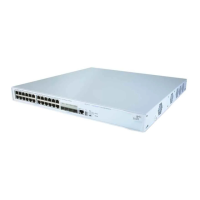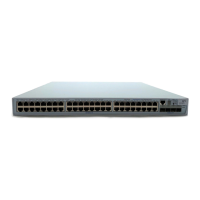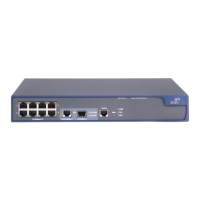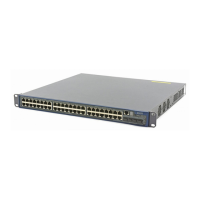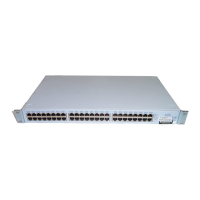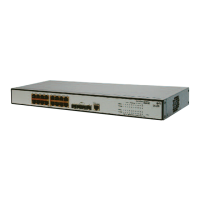92 CHAPTER 5: NETWORK PROTOCOL OPERATION
Networking Diagram
Figure 27 Networking Diagram of Configuration DHCP Relay
Configuration Procedure
1 Configure the group number of DHCP Server as 1 and the IP address as
202.38.1.2.
[4500]dhcp-server 1 ip 202.38.1.2
2 Associate the VLAN interface 2 with DHCP Server group 1.
[4500]interface vlan 2
[4500-Vlan-interface2]dhcp-server 1
3 Configure the IP address of the VLAN interface 2, which must be in the same
segment as DCHP Client.
[4500-Vlan-interface2]ip address 10.110.1.1 255.255.0.0
To allocate an IP address successfully for the DHCP Client, you need to make the
necessary configuration on the DHCP Server, which varies, depending on device
type.
Troubleshooting DHCP
Relay Configuration
Perform the following procedure if a user cannot apply for an IP address
dynamically:
1 Use the display dhcp-server groupNo command to check if the IP address of
the corresponding DHCP Server has been configured.
2 Use the display vlan and display ip interface vlan-interface commands
to check if the VLAN and the corresponding interface IP address have been
configured.
3 Ping the configured DHCP Server to ensure that the link is connected.
4 Ping the IP address of the VLAN interface of the Switch to which the DHCP user is
connected from the DHCP Server to make sure that the DHCP Server can correctly
find the route of the network segment the user is on. If the ping execution fails,
check if the default gateway of the DHCP Server has been configured as the
address of the VLAN interface that it locates on.
If there is no problem found in the last two steps, use the display dhcp-server
groupNo command to view which packet has been received. If you only see the
Discover packet and there is no response packet, the DHCP Server has not sent the
message to the Switch. In this case, check if the DHCP Server has been configured
properly. If the numbers of request and response packets are normal, enable the
Ethernet
Ethernet
Internet
DHCP client
DHCP client
Switch ( DHCP Relay )
10.110.0.0
DHCP Server
202.38.1.2
10.110.1.1
202.38.0.0
202.38.1.1

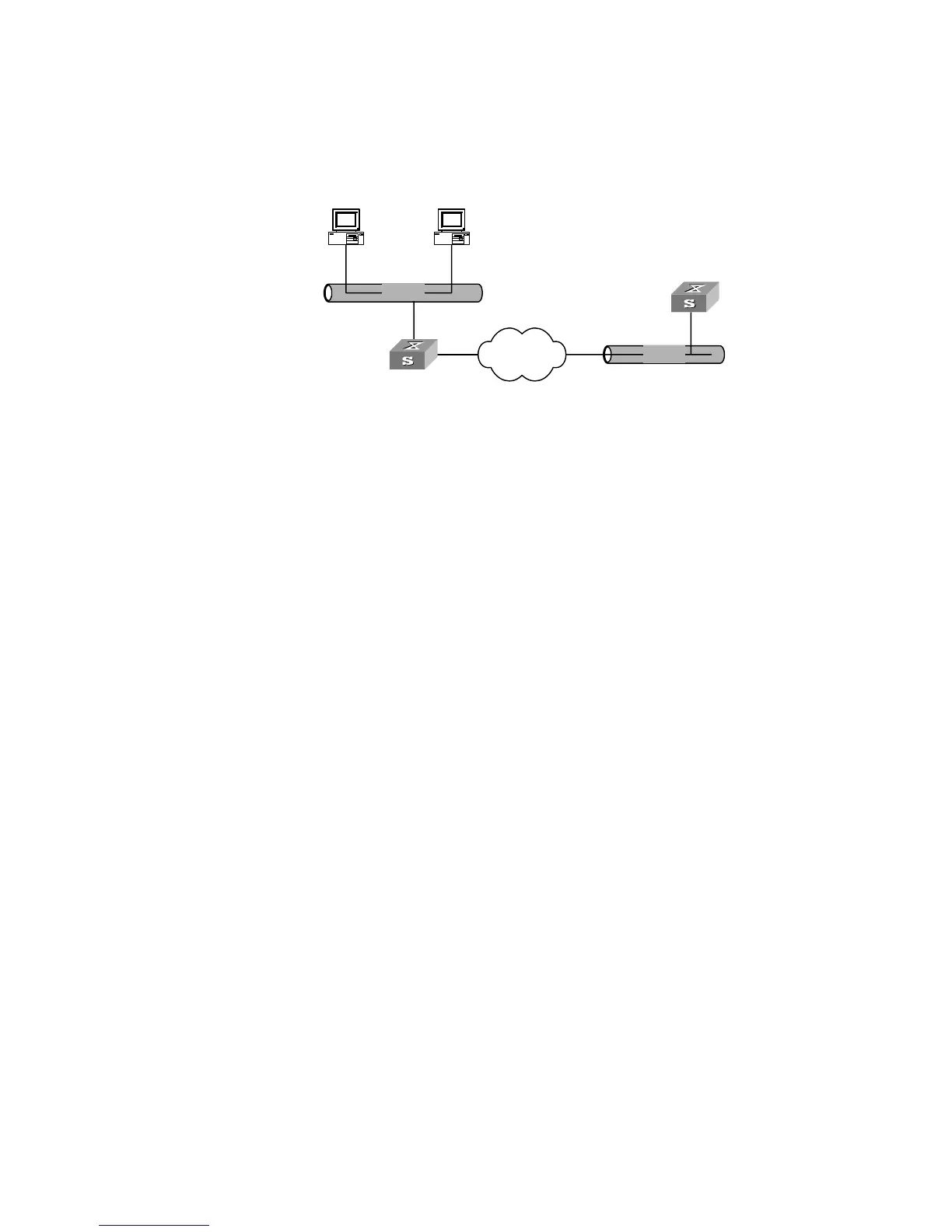